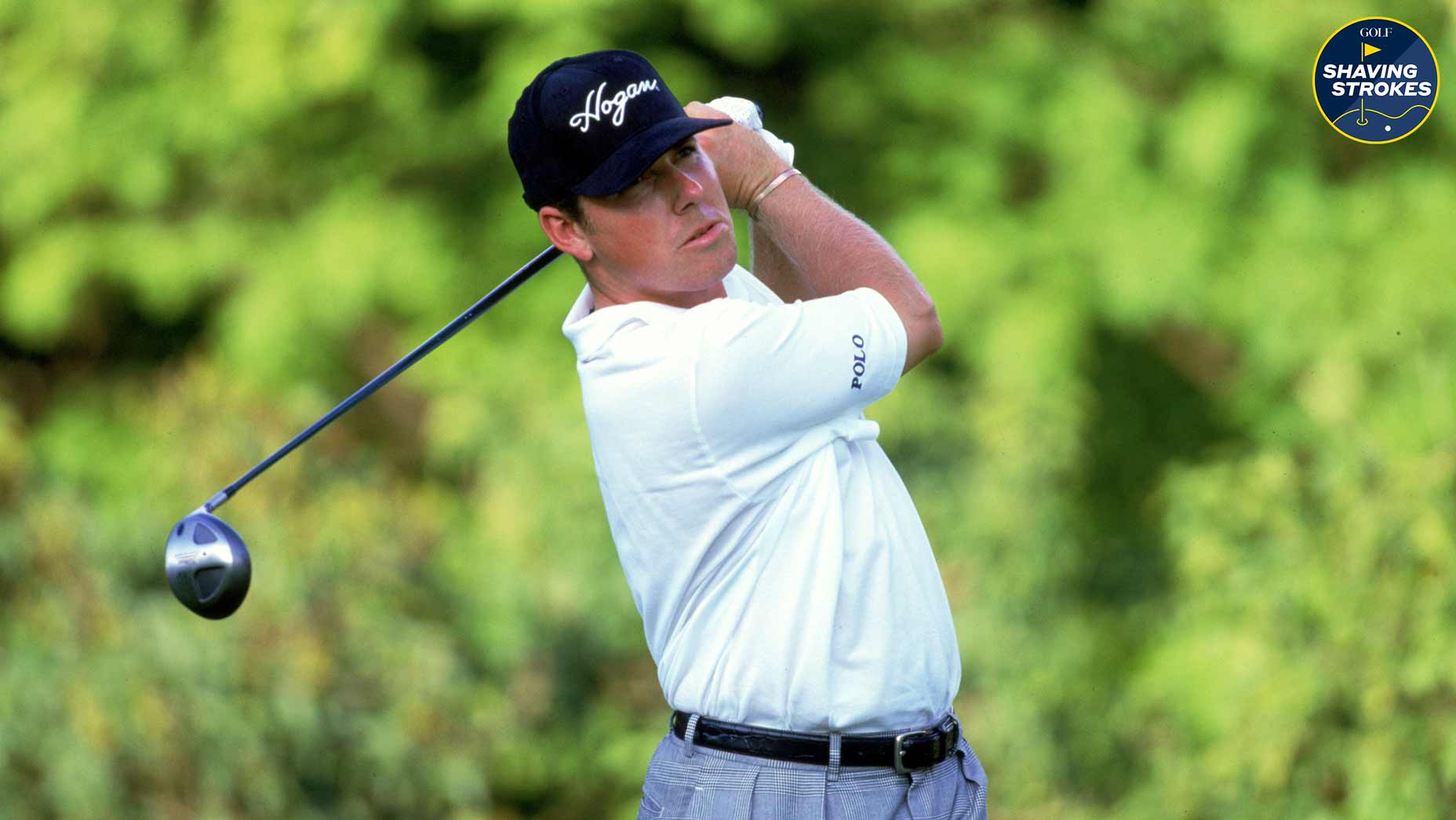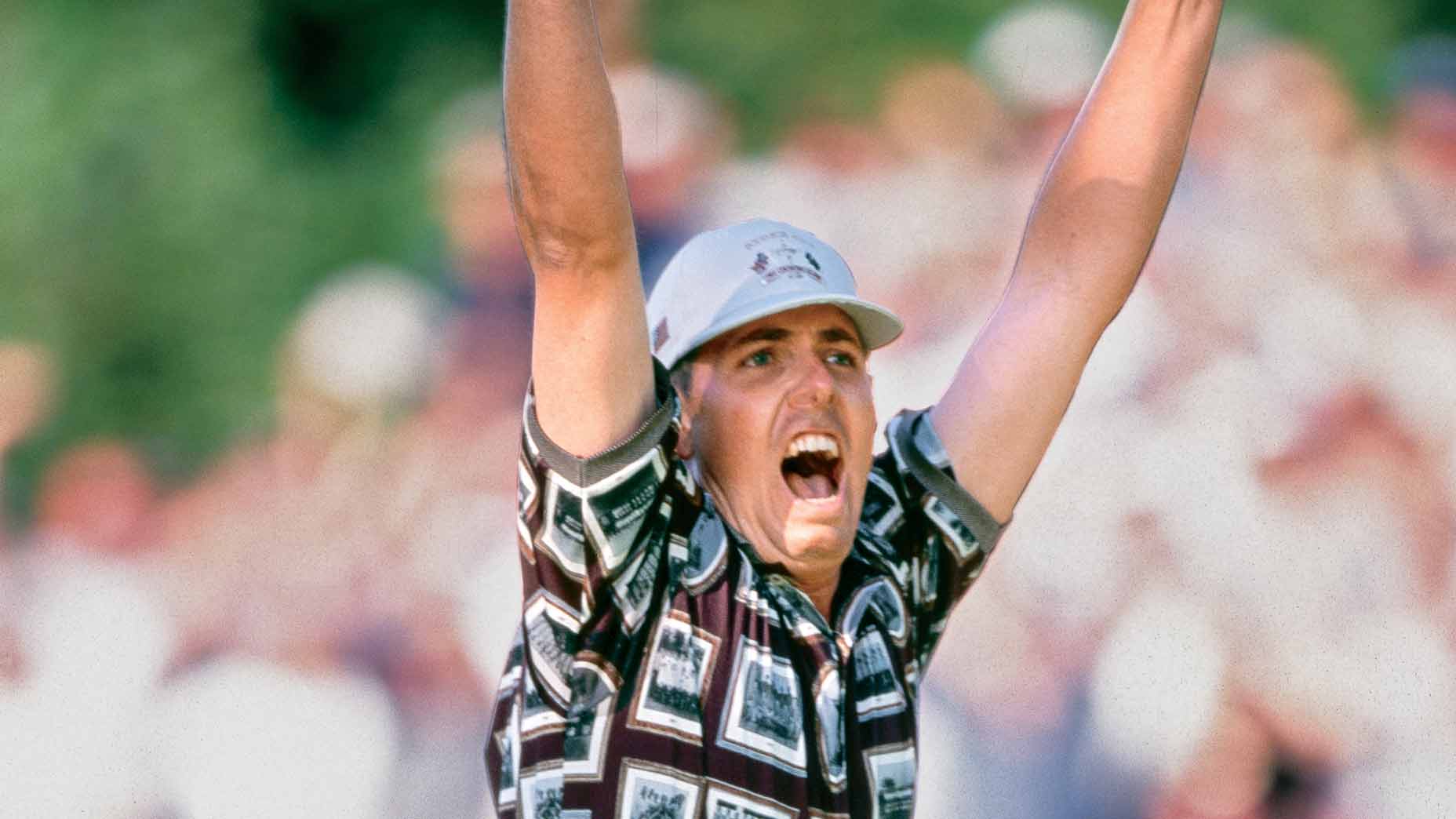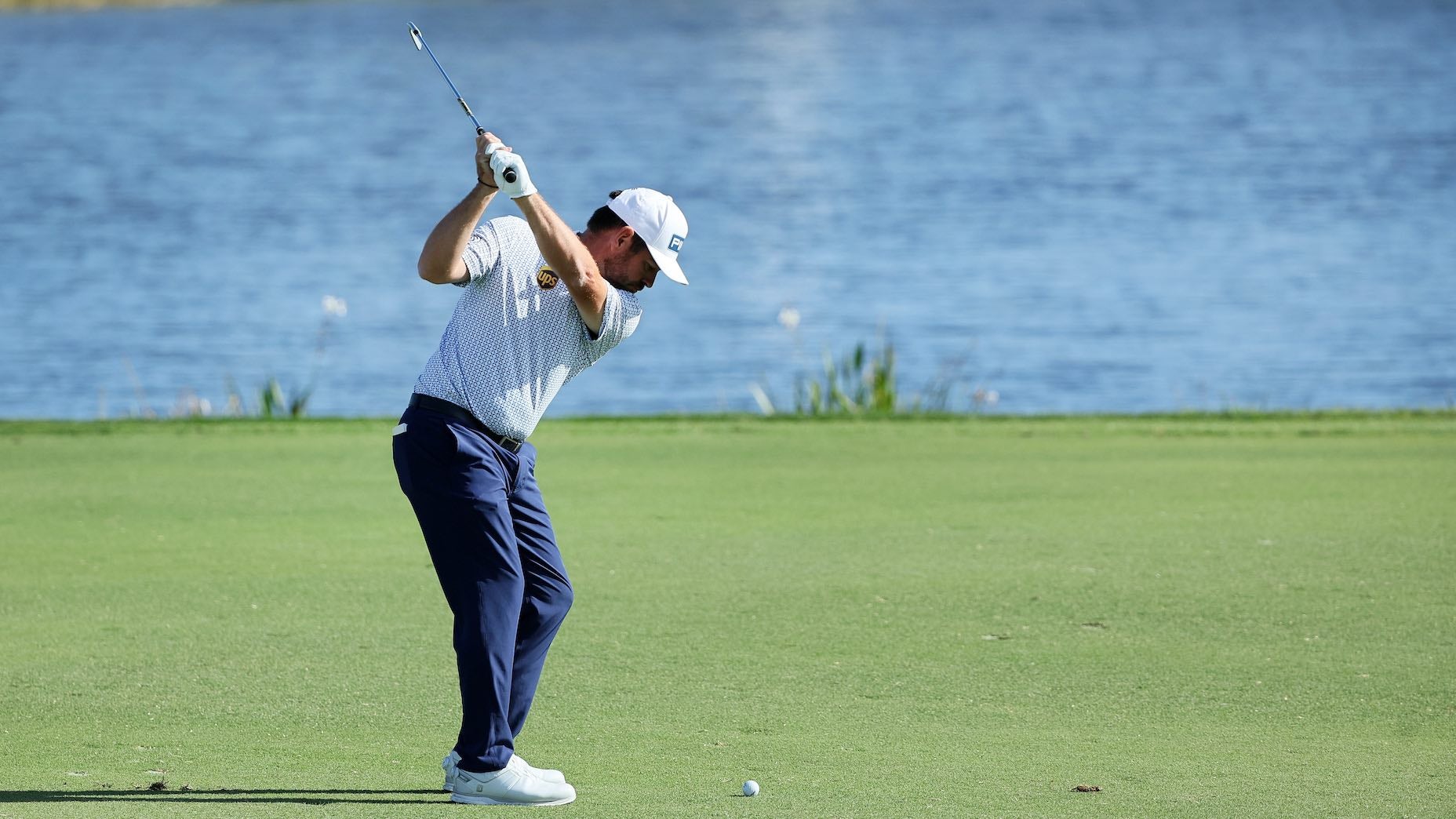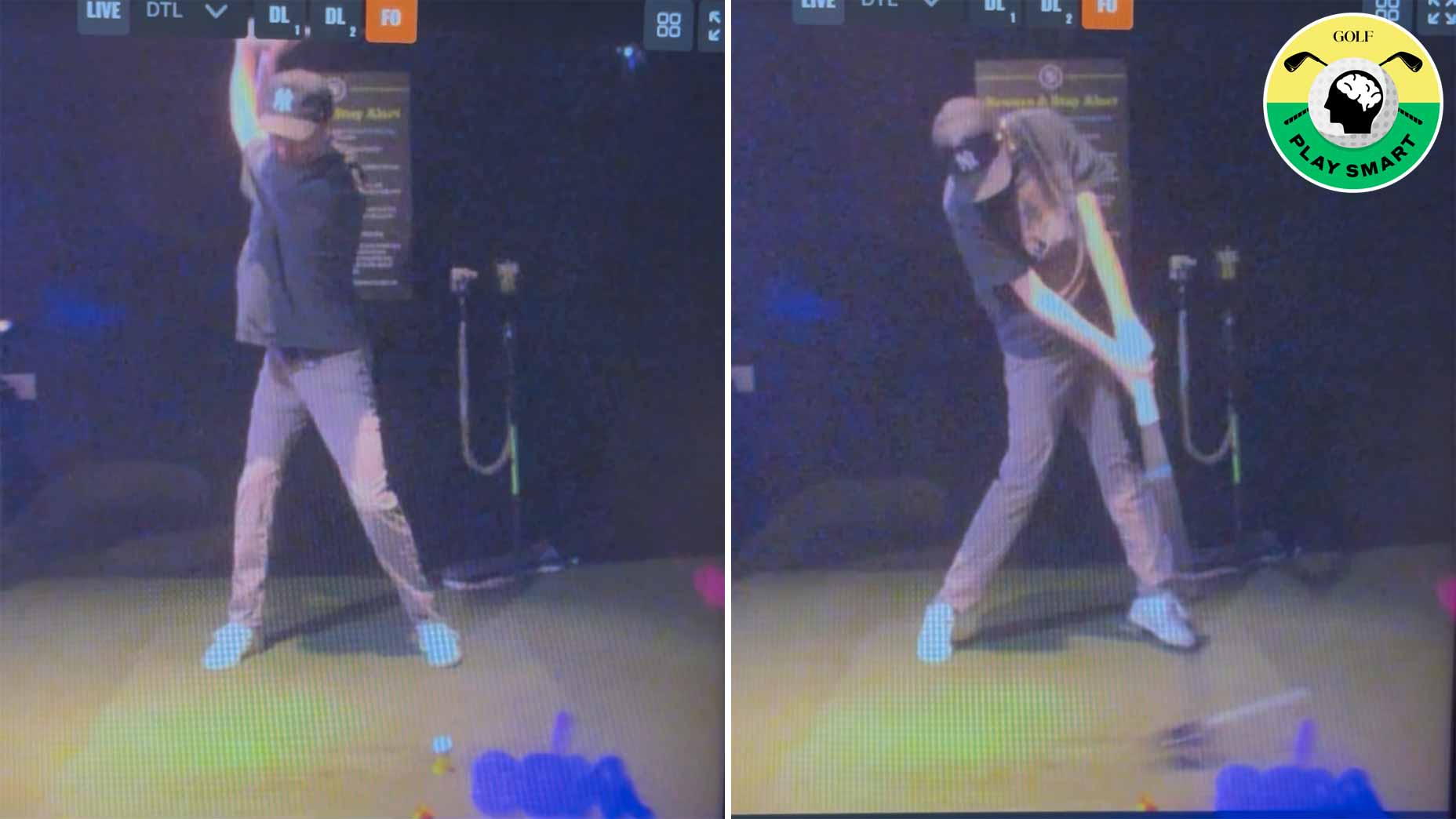Welcome to Shaving Strokes, a GOLF.com series in which we’re sharing improvements, learnings and takeaways from amateur golfers just like you — including some of the speed bumps and challenges they faced along the way.
It’s in every amateur golfer’s blood to whip out the driver and swing as hard as they can on nearly every shot, thinking they’ve got the ability to bomb the thing for an extra 20 yards or so.
Sadly, we know what happens when we do this.
The ball typically hits off either the toe or heel and shanks or slices, the club comes in too steep and digs into the ground for a chunk, or our swing sequence is so out of whack that we just top the hell out of the ball and watch it get grounded, saying aloud, “just keep rolling.”
I’ll bet a cool $100 that everyone reading this knows this exact feeling. In fact, there’s a good chance it happened to you in your most recent round! (Editor’s Note: I accept Venmo).
Justin Leonard shares wisdom to improve your play
It takes skill to hold back from the temptation of trying to swing out of your shoes on every shot and to simply just play within your abilities. Sure, it’s more fun to try and “ooh” and “aah” your buddies with an impressive bomb, but it doesn’t happen nearly as frequently as any of us hope.
One player who is notorious for simply playing within himself and executing good golf shots is major champion Justin Leonard.
Leonard, who captured the 1997 Open Championship, was never known for crushing it with his driver. Instead, he consistently hit fairway after fairway, casually playing a smart shot, controlling what he could and avoiding unforced errors.
This is something that still helps him today and says it’s a skill that every amateur needs to learn if they’re serious about lowering their scores.
“I think a big thing for amateurs is kind of knowing strengths and weaknesses,” he tells me. “Knowing your own limitations and understanding like, OK, look, if you’re on a par-5, it’s a hole you know you’re not going to reach in two, so why not take a club that you’re just going to put it in play with? You’re going to play it in three shots anyways.”
While talking with Leonard about this, he pinpointed a real-life example that he experienced during last year’s U.S. Senior Open, providing insight into his approach on a tricky par-5 hole.
What’s Justin Leonard up to? The ’99 Country Club hero is diving back into golfBy: Dylan Dethier
“There was a par-5 with water down the right, rough on the left,” he explains. “I thought, why not take a 5-wood and just play it as a three-shot hole, rather than go ahead and hit driver to stretch for extra yardage? If I had hit it in the rough, I’d have been in trouble, and would’ve had a harder layup and a longer third shot.”
Leonard also reminds amateurs that they don’t always need to immediately grab the big dog on every par-4 or par-5 — which are often scoring holes. If you struggle with a hook or a slice with your driver, simply change your approach, play safer shots, and, in many cases, you could reach the green in less shots by doing so.
“For amateurs, understanding that you don’t have to hit driver off the tee is so important,” he says. “A lot of times it’s probably not the play, and just understanding your own strengths and weaknesses and playing more towards your strengths is the quickest way to lower scores.
“If you struggle from fairway bunkers, then find a way to take them out of play. If it’s greenside bunkers that give your problems, aim towards the other side. Just avoid short-siding yourself and find alternative ways to play around some of your known weaknesses.”
So if you can improve your course management and dial in your decision-making, Leonard says you’ll have a better chance at controlling that little voice in your head that’s tempting you to always go for distance over accuracy.
“You don’t have to go practice things that you’re uncomfortable with, so once you’re out there trying to shoot the best score possible, just understand your strengths and weaknesses, then navigate your strategy and your game around them,” he says.











